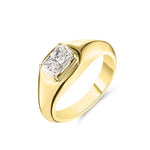You have no items in your shopping cart.
"The pearl is the queen of gems and the gem of queens" said Grace Kelly, and it seems we couldn't agree more. Officially the world's oldest gem, pearls are one of 2022's biggest trends, making the ultimate comeback, not just in jewellery but adorning clothes, homewares and even nail art. "Pearlcore" is the new term as men and women of all ages embrace this lustrous gemstone. Time to go digging in the old jewellery box and dust off that pearl necklace.....
Pearls come in all kinds of sizes, shapes, colours and origins, so there's plenty of choice but it can get pretty confusing. Do you know your natural from your cultured pearls, or the difference between freshwater and seawater pearls? Here is our definitive guide to pearl jewellery, so you can source exactly what you're looking for.
Natural & Cultured Pearls
There are two main types of pearl: natural and cultured.
Cultured pearls are genuine, oyster-produced pearls that are made with encouragement by humans. These pearls are produced by irritants that are manually implanted into the oyster, and the pearl grows from the iridescent substance of ‘nacre’, otherwise known as ‘mother-of-pearl’. Before cultured pearls were created in 1893, pearls were rarer than diamonds since the only pearls that existed were natural.
Natural pearls are pearls that occur without any manipulation by humans, made by wild oysters living under the sea. These are extremely rare so they're often outrageously expensive. Vintage pieces aside, nearly all modern pearls are cultured pearls.
Freshwater or Seawater
The difference is all in the name: Freshwater pearls are grown in mussels that live in freshwater such as lakes and rivers. Saltwater pearls are grown in oysters in oceans and seas. Saltwater pearls are more expensive than freshwater pearls because the saltwater oyster usually only produces one pearl at a time, whereas freshwater mussels can produce up to 30 pearls at a time. Although they are more durable than saltwater pearls, freshwater pearls rarely come in perfect round shapes. They’re often smaller than saltwater pearls as they’re cultivated over a shorter period of time (less than 2 years).
The 3 main types of seawater cultured pearls are:
1. Akoya - the traditional pearls that people usually think of. Typically, they are perfectly round, white and highly lustrous.2. Tahitian - renowned for their exotic look, they are native to French Polynesia and come in shades of grey, black, or brown.
3. South Sea - the largest and most valuable cultured pearls. They are cultivated in the warm waters of northern Australia, Indonesia, the Philippines and Burma.
How to tell if a pearl is real:
You can tell if pearls are real by rubbing them against one another. If there is friction, the pearls are real. Friction means there is calcium, a key ingredient in pearls. If they just slip off each other, they are most likely imitation (also called simulated pearls).
























